Researchers complete set of halonium ions by isolating a reactive chloronium structure
For the first time, researchers have reported the solid-state structure of pyridine-based chloronium ions. Previously reported to be intermediates in the oxidation of secondary alcohols, these nitrogen-ligated chloronium ions had proven challenging to isolate.
Halonium species are ions that contain a positive charge on the halogen atom, where it would typically hold a negative charge. These compounds are known for the four halogens, fluorine, chlorine, bromine and iodine, with the first structural evidence of a fluoronium ion reported in 2021. Whilst the pyridine derivatives of the halonium ions are all known to exist, and the chloronium analogue has been studied by NMR, mass spectrometry and computational analysis, solid-state structural evidence for the chloronium species had not been reported until now.
The group of Sebastian Riedel at the Free University of Berlin in Germany synthesised [bis(pyridine)Cl][BF4] by reacting pyridine with molecular chlorine and sodium tetrafluoridoborate in propionitrile solvent, producing only sodium chloride as a byproduct. They then filtered and cooled the solution to –80°C to obtain x-ray-suitable single crystals.
The group also synthesised [mono(pyridine)Cl][AsF6] and obtained its solid-state structure by modifying their process and reacting pentafluoropyridine with [Cl2F][AsF6], a powerful chlorinating reagent. A solution of the product in hydrofluoric acid produced single crystals suitable for x-ray analysis. This is the first report of a mono(pyridine)chloronium cation.
References
This article is open access
P Pröhm et al, Chem. Sci., 2023, 14, 2325 (DOI: 10.1039/d2sc06757a)
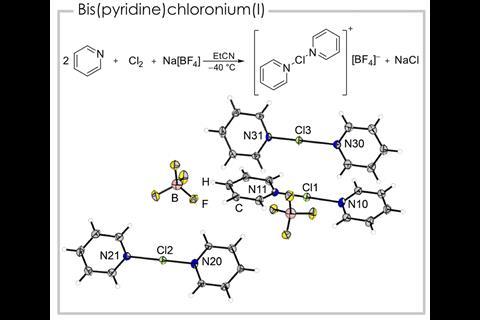
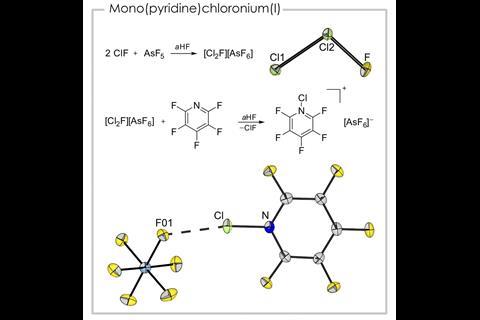
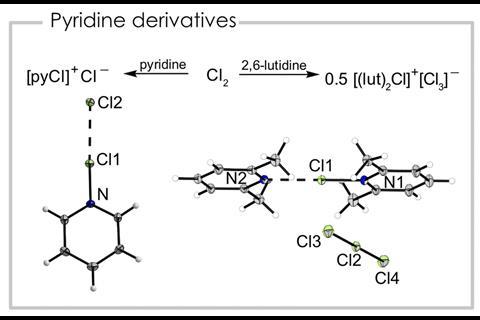
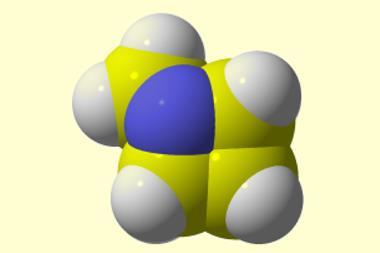
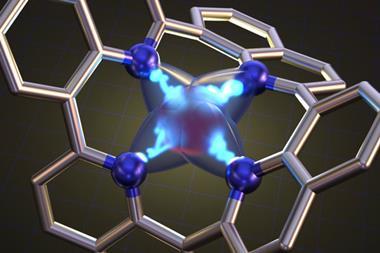
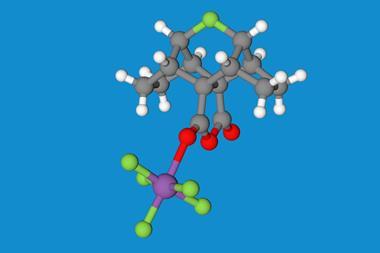








No comments yet